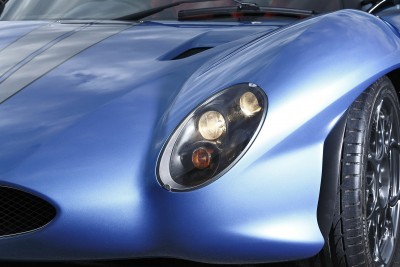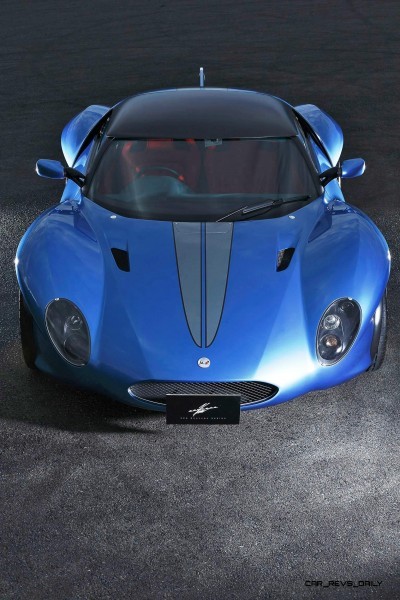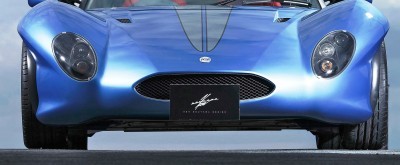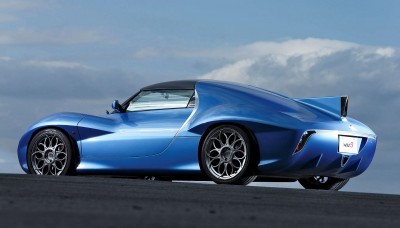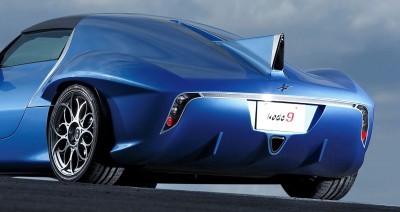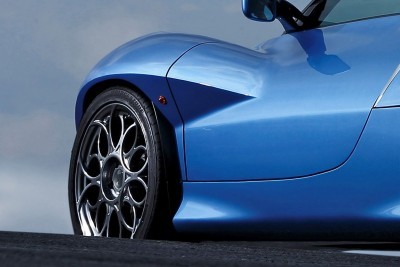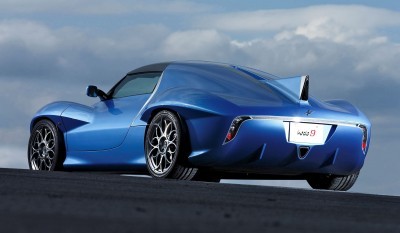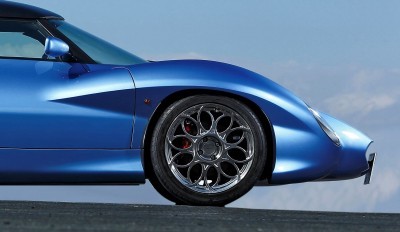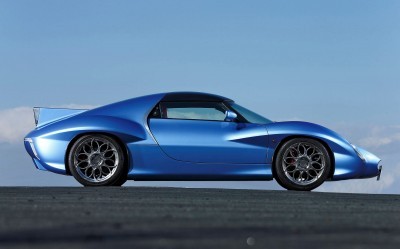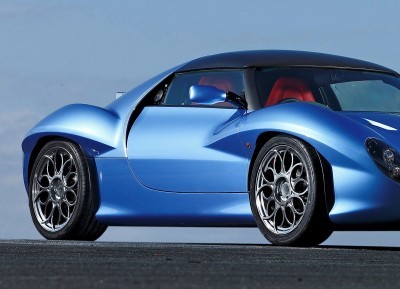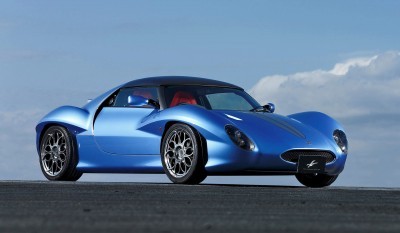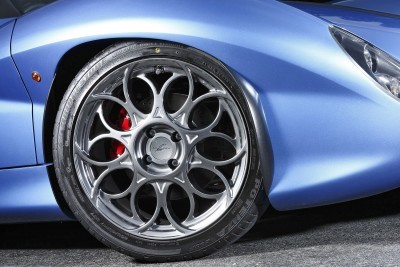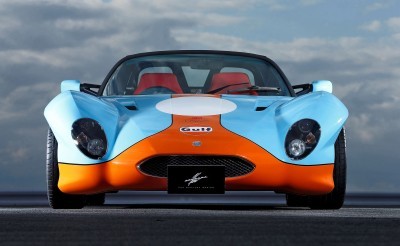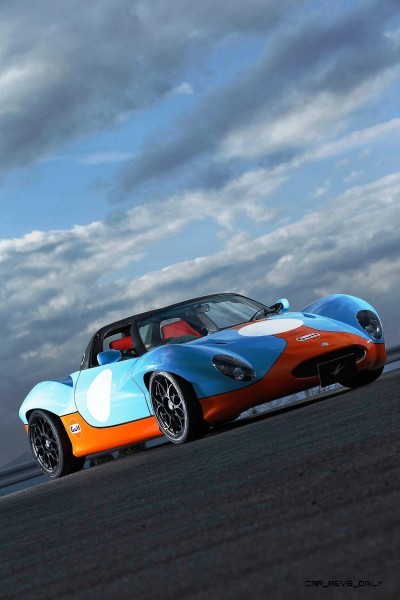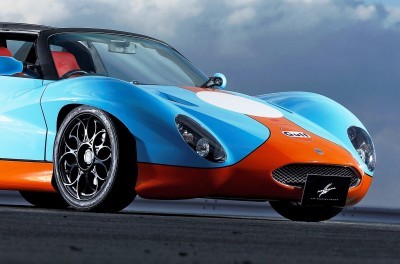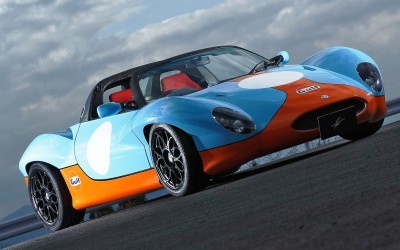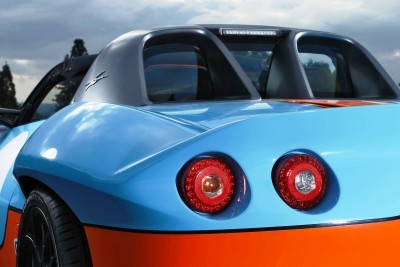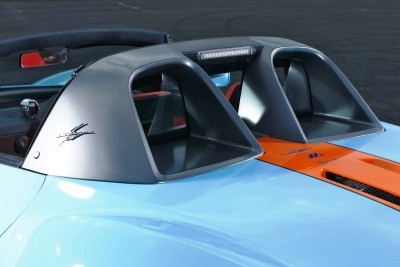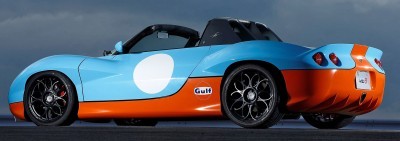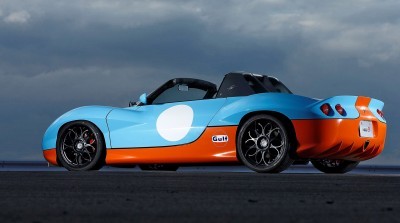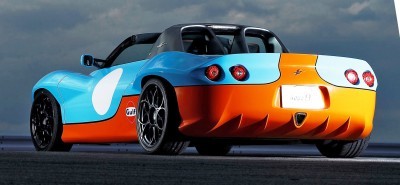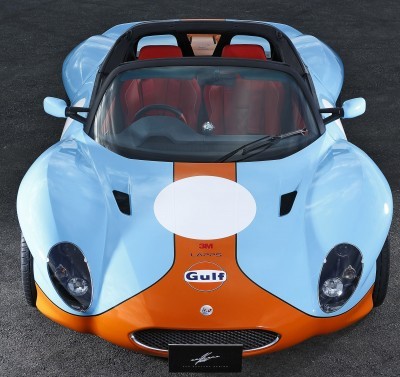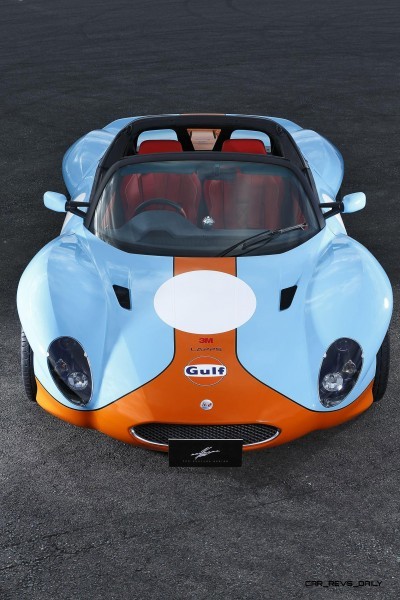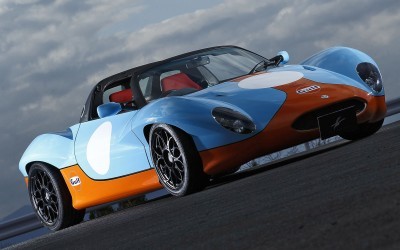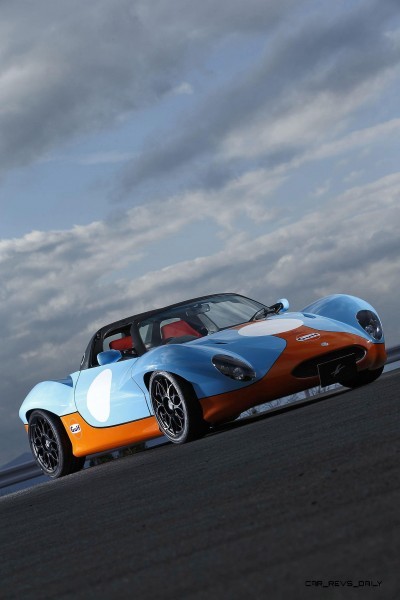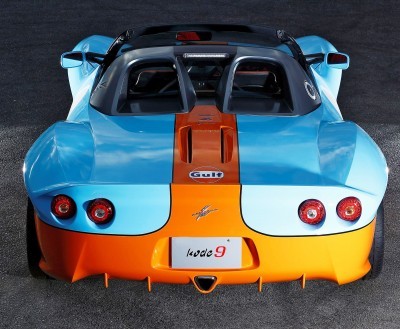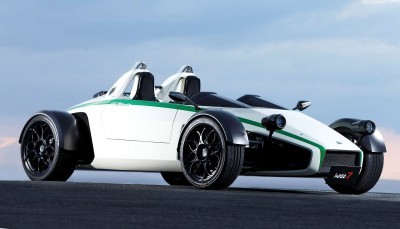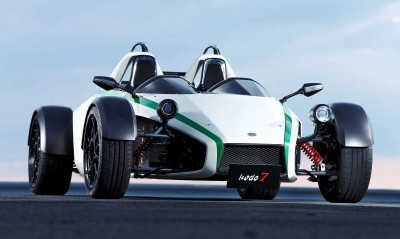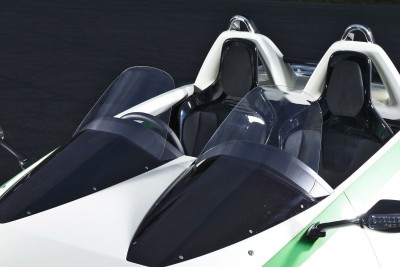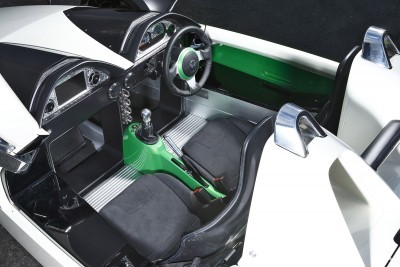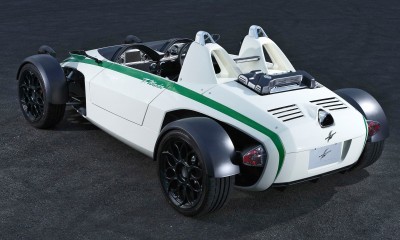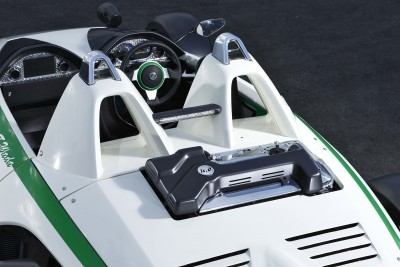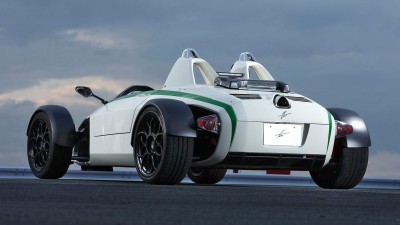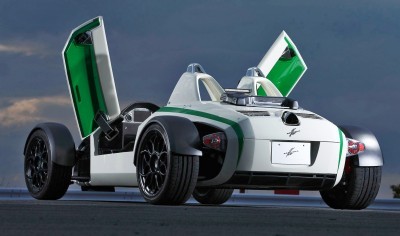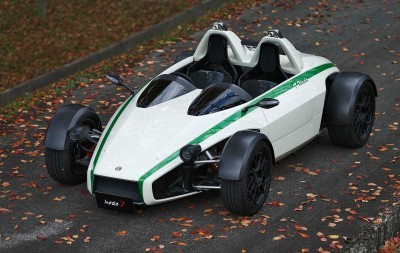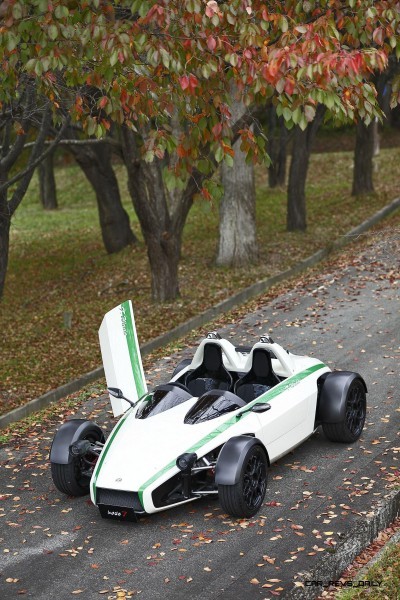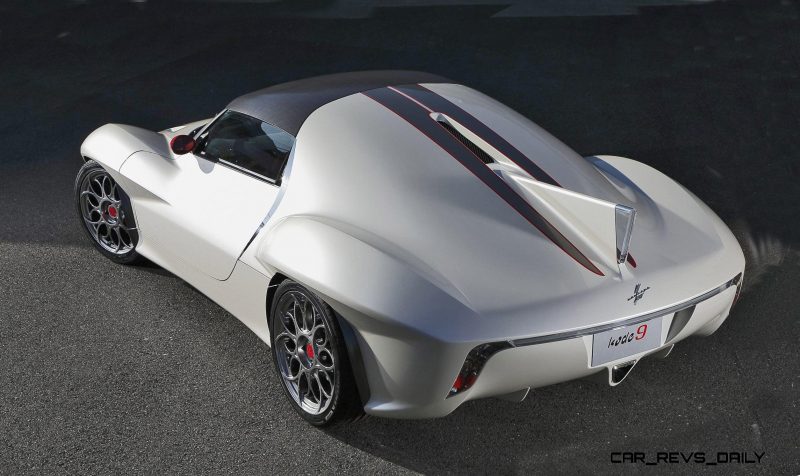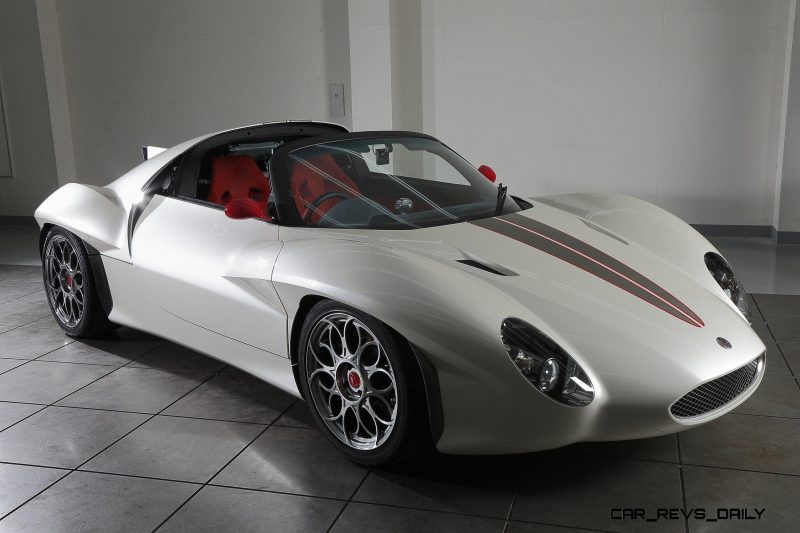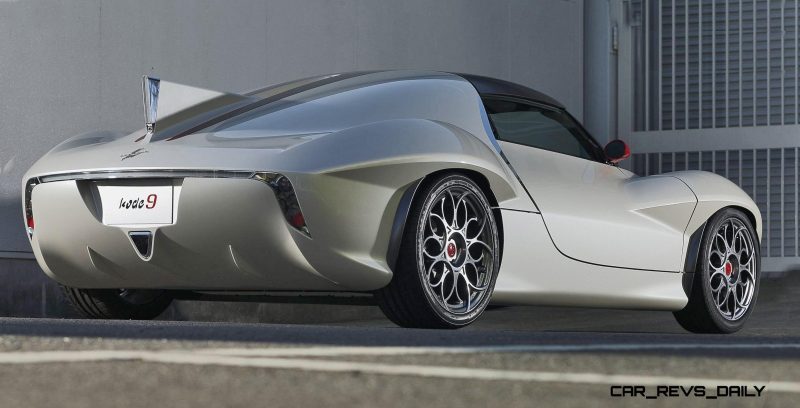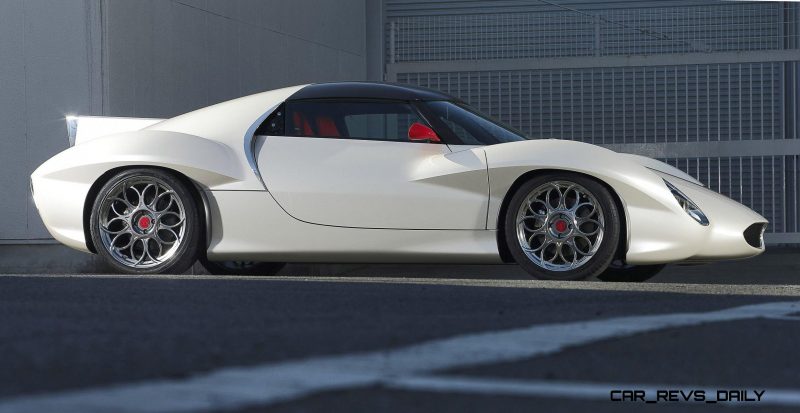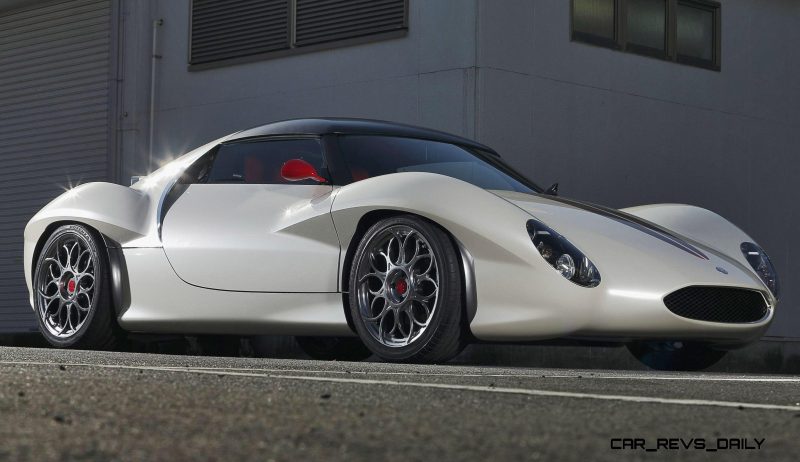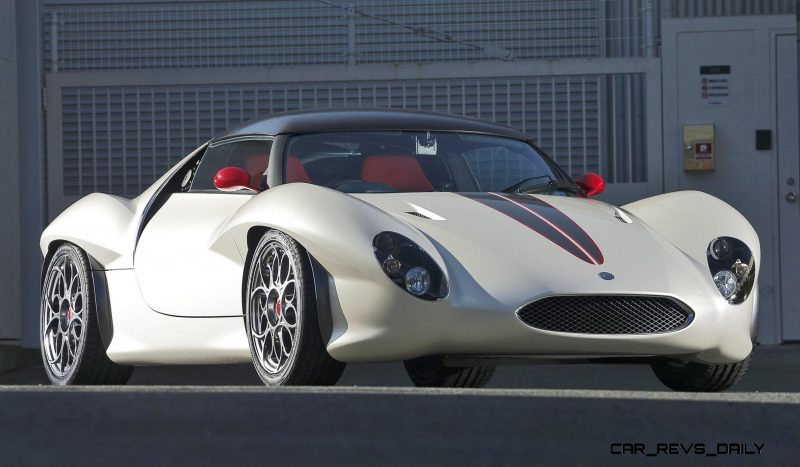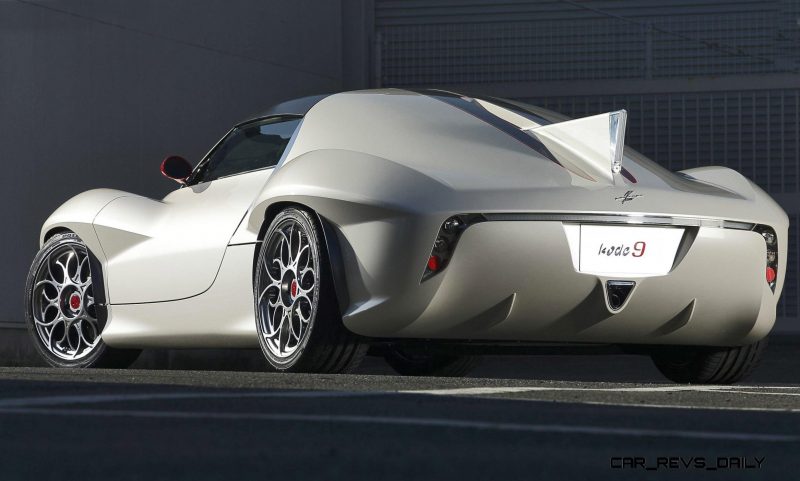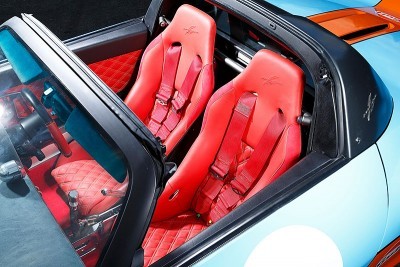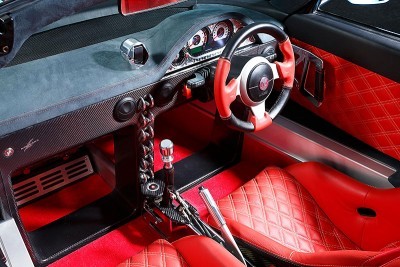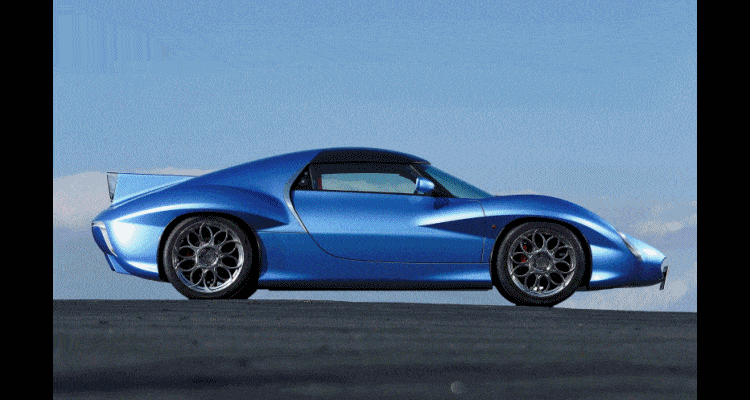 We love these gorgeous exotics from ex-Pininfarina man Ken Okuyama. They were the darlings of the 2015 Tokyo Motor Show — even nabbing headlines from the big OEM displays thanks to their alien design, exotic measurements and production intent.
We love these gorgeous exotics from ex-Pininfarina man Ken Okuyama. They were the darlings of the 2015 Tokyo Motor Show — even nabbing headlines from the big OEM displays thanks to their alien design, exotic measurements and production intent.
Nearly finished the below article before we discovered the Lotus link under the skin of the Kode9 Spyder and Coupe. At the time it seemed like a writeoff of a few hours effort… only to have major bait/switch feelings.
Since that distant original article went out (40 hours ago), however, we have a bit more perspective. And more info to share thanks to a helpful megapack of high-res photos and tech specs from the Ken Okuyama Design press team.
SO! First things first.
Facts:
— The Kode9 Spyder made its world debut as a concept for the Tokyo show.
— The Kode9 Coupe is now a production model, making its debut alongside its topless sibling.
Very, very few changes versus the concept. Still wearing giant, wildly curved clamshell bodywork for the nose and tail. These have no shutlines to mar the smooth flow of those sexy fenders, and also wrap around the underbody in a sexy way out back. Integrated diffuser vanes are beautiful to see in real body-color paint finishes versus the typical grey plastic.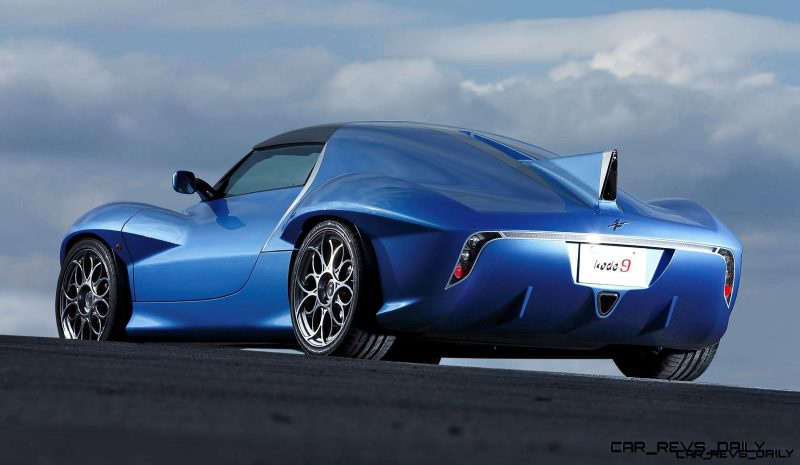
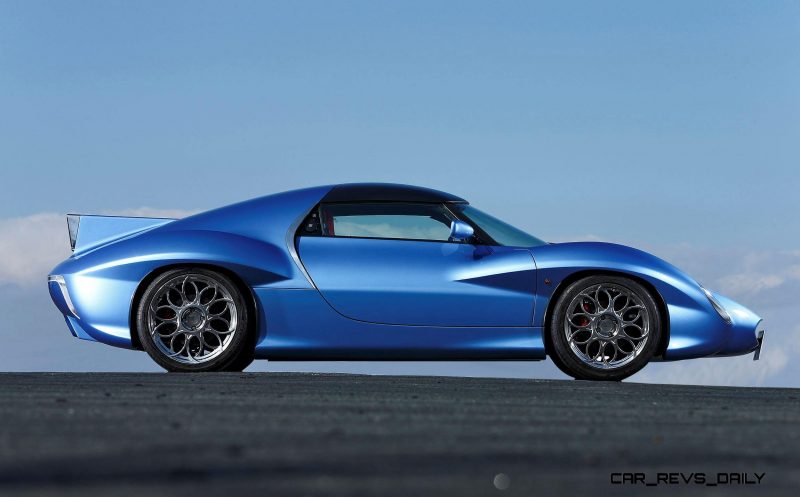
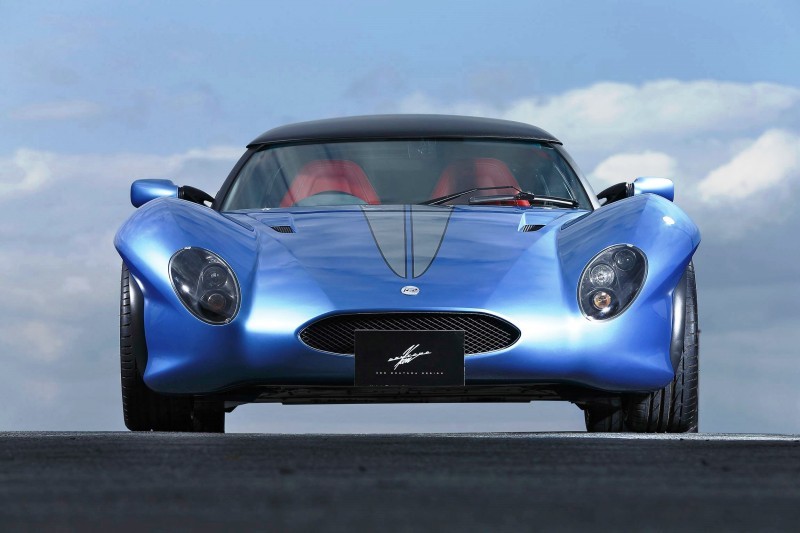
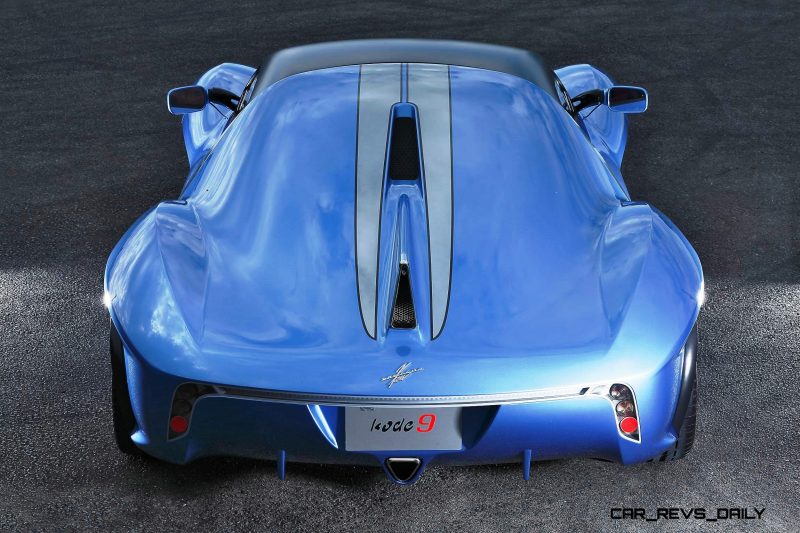
Speaking of grey plastic: the carved edges of the fenders on all sides of the Kode9 are a challenge for a road-legal car. New spats ahead of the tires appear on the production model. But because these are dark plastic versus the painted fenders themselves, the original look is intact.
Other notable change we can see in the Kode9 Coupe production model? Much wider mounts for the wing mirrors. These are important for a car without a true back glass, or real camera-based mirror replacements.
— The white Kode9 Coupe shown initially, and pictured extensively in the original article, was in fact a concept.
— Another Tokyo reveal is the new Kode7 Series II
— Kode9 GT Coupe is in development with more than the 370HP of the just-launched production car.
— Tech specs: we have the official tech specs to share in Japanese and English for both cars: the Kode9 Spyder Concept and Kode9 Coupe production car.
With a bit more time and better looks at both cars, we are less jaded about the Lotus mid-section for the models. Okuyama does clearly say that the central chassis elements are hydroformed aluminum, just does not specify where those pieces originated.
This sharing makes sense. The Elise Series II (*from 2000+ for latest crash strength) is one of the lightest and stiffest passenger cells available for re-purposing as an all-new sports car. The shared piece also makes road certification a breeze: it is already checked for rollover strength and/or some crash tests. Finally, the shared windshield structure saves a ton of expense on safety tests and parts procurement versus the alternative of a new piece of safety glass.
Windshields, as we know, are not very expensive. Perhaps $500 for an OEM replacement. But those economies only come when the manufacturer places an initial contract order for tens or hundreds of thousands of units. For an exotic design, ordering perhaps 50 windshields might result in each costing $10k-plus. Just for the glass!
So we see the logic in sharing the passenger cell with Lotus, pared to custom-designed front and rear subframes and double-wishbone suspensions front and rear. Dimensions of the Kode9 twins share the 2300-mm wheelbase of the Elise, but are much longer and wider.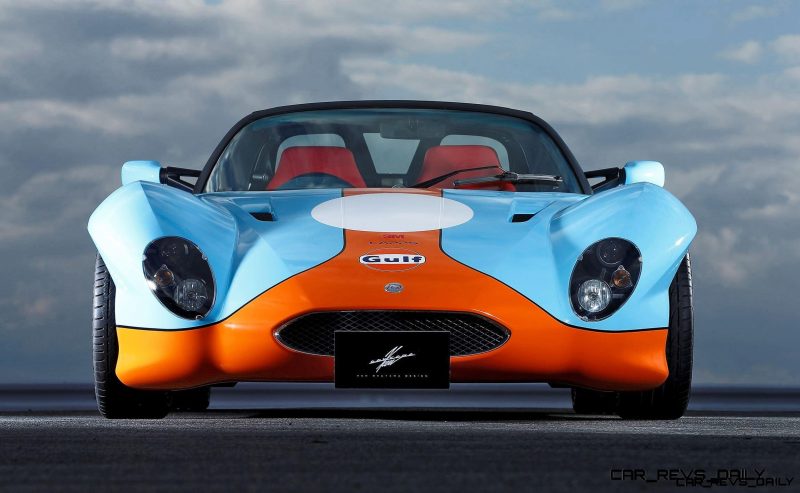
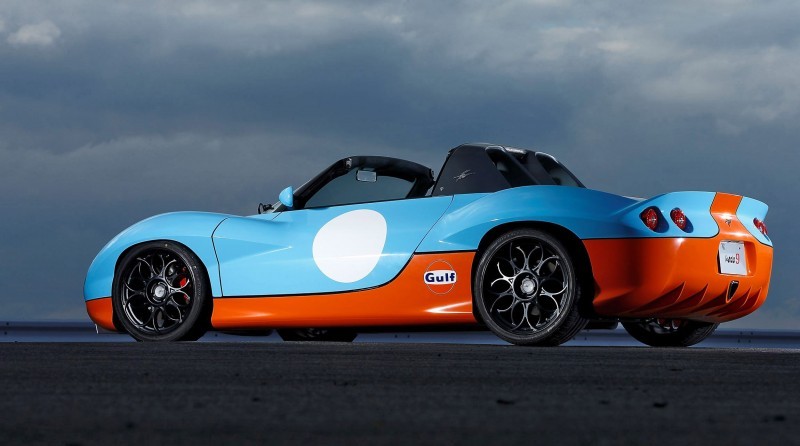
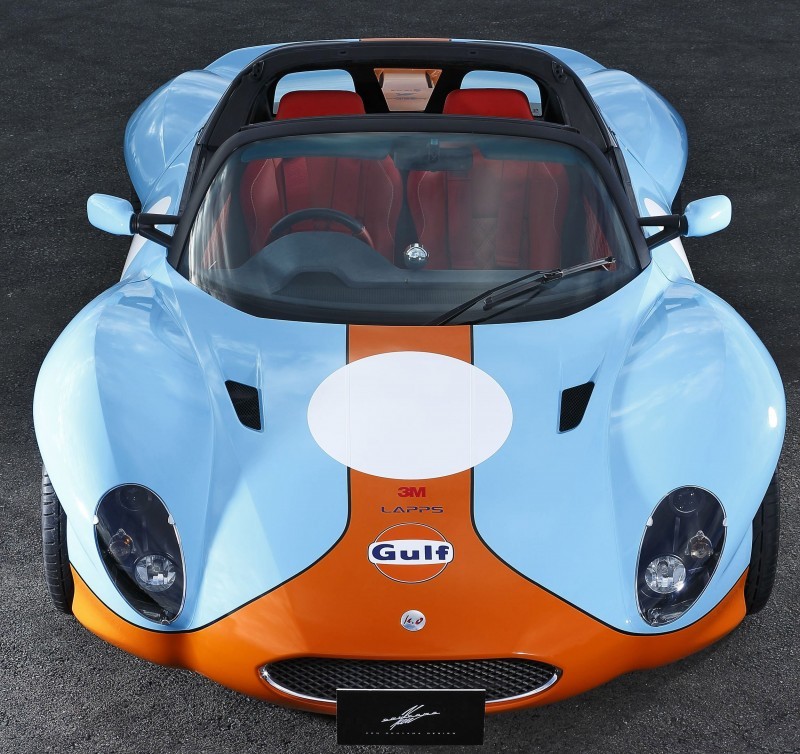
At its core, then the Kode9 seeks to bring Lotus track precision to an all-new, shockingly advanced design. What better place to start than an actual Lotus?!
This design is still the core appeal of the machines — and is fabulously tempting no matter how much part sharing helped the cars go from CAD-CAM to twin-cam engines at redline.
We still wonder about the pricing and availability of the Kode9, but the previous open-wheeled Kode7 does appear road-legal in the UK… spiritual home to many lightweight and low-volume — but high-pleasure sports cars.
Hope you like all this extra info on the Kode9 sports cars! Pricing is likely to vary greatly, but for someone with a donor Lotus to be refitted, the cost of the Kode9 Coupe rebirth could be as low as around $40,000. Not bad versus initial estimates of well over $100k.
2016 OKUYAMA Kode9 Coupe (Production Model)
TECH SPECS
Production Model – Kode9 Coupe
( コードナイン プロダクションモデル)
Length:4140mm Width:1905mm Height:1130mm Wheelbase:2300mm Fr tread:1565mm Rr tread:1580mm Gross vehicle weight:810Kg
Engine:4 cylinder Super charged engine
Displacement:1798cc Maximum power:350PS Transmission type:6-speed manual Suspension type:Double wishbone
Brake type:Fr ventilated disc, 2pot caliper Rr ventilated disc, 1pot caliper Tire size:Fr 205/45ZR17 Rr 245/35ZR18
Kode9 Spyder Concept
Length:4014mm Width:1905mm Height:1122mm Wheelbase:2300mm Fr tread:1565mm Rr tread:1580mm Gross vehicle weight:780Kg
Engine:4 cylinder Super charged engine
Displacement:1798cc Maximum power:350PS Transmission type:6-speed manual Suspension type:Double wishbone
Brake type:Fr ventilated disc, 2pot caliper Rr ventilated disc, 1pot caliper Tire size:Fr 205/45ZR17 Rr 245/35ZR18
2015 OKUYAMA Kode9 Spyder Prototype
KEN OKUYAMA DESIGN at the 44th Tokyo Motor Show
Three world premiere models include the kode9 Spyder Prototype, the kode9 production model and the kode7 Series II
Ken Okuyama Design has unveiled three new models at a press briefing
kode9 Spyder Prototype (World Premiere)
Following in the footsteps of the kode9 coupe, Ken Okuyama Design revealed its world premiere for Tokyo, the lightweight two‐seater kode9 Spyder prototype. This design study takes the original proportions of the kode9 coupe and adds an extra air of elegance, while at the same time, integrating a bold fender arch that gives it the nuance of a true sports car.
It might boast the kode9 coupe’s sportiness and wind‐in‐the‐air thrills of a spyder, but no compromises have been made in body rigidity or curb weight. In fact, improvements in body construction and software updates have actually reduced the car’s overall weight.
Every model in the kode series has materialized thanks to the expertise of some of the world’s best suppliers and state‐of‐the‐art material technologies.
Employing a lightweight yet safe aluminum chassis, the kode9 Spyder also incorporates in‐house weight‐saving carbon technology, Yamazaki Mazak Corp’s high performance CNC cutting technology and component production knowhow using an advanced 3D printer. Each model is finished up the chassis fabrication, power‐train and body assembly at our factory in England, and done the final touch and test‐driving at our factory in Yamagata before delivering the car to our customers.
Like the coupe, the kode9 Spyder is configured for a transversely mounted mid‐ engine layout, but the customer may select their own brand of engine. Our 780kg(lightweight carbon fiber body version) display model combines a supercharged 1.8 liter, 4‐cylinder engine with a low center of gravity and inspired sports car dynamics to deliver world‐class levels of handling.
As soon as the car is revealed at the Tokyo Motor Show, we will invite a limited number of 5 orders per year. Price will depend on specification, so please make enquiries directly to Ken Okuyama Cars.
kode9 Production Model (World Premiere)
Production model deliveries have already commenced of the kode9 concept which debuted at the 2013 Tokyo Motor Show. A lightweight, spartan coupe whose definition sits comfortably between that of a race car and a sports car, this two‐door has no superficial styling elements and employs simple futuristic design proportions that contravene today’s accepted design trends.
Penned with aesthetically beautiful basic proportions that contrast against the excesses of today’s styling trends, the kode9 production model arrives, wearing a winsome front end, perfectly blended with flowing dynamic lines of race cars from the 1960s and 70s and today’s latest technology. Devoid of overly artistic character lines, the fender arch and tail fin combine to give this car a strong identity, one that shines as an antithesis of today’s overly complicated car design.
The kode9 production model is configured for a transversely mounted mid‐ engine layout, but the customer may select their own brand of engine. The 810kg display model combines a supercharged 1.8 liter, four‐cylinder engine and a lightweight body to deliver a special type of handling not possible with today’s heavy sports cars.
Boasting a lightweight body with incredibly short overhangs, and a chassis that excels in locating the powertrain hardware lowdown to the car’s center, the kode9 production model employs fully adjustable suspension with pillow ball arms making the coupe suitable for competition use.
It might be a hardcore sports car but it still delivers the comfort levels of a gran turismo style coupe. Customers can select from a wide range of interior trim which combine lightweight carbon fiber and soft‐to‐the‐touch leather and alcantara. Fitted with air‐conditioning as standard equipment, the cabin offers loads of space and a removable targa roof to enjoy the great outdoors. With no rear window, a high‐definition camera mounted inside the rear fin enables the driver to see a reversing view on a mini‐monitor positioned inside the rearview mirror. Clients can request a rear window be added.
The limited production run of five kode9 models is sold out and deliveries have commenced and KOD has already started development of a high‐performance kode9 GT version based on the kode9 coupe.
2016 OKUYAMA Kode7 Series II
Kode7 Series II (World Premiere)
The kode7 was originally launched at the 2008 Geneva Motor Show. Based on that model, the kode7 Series II employs a complete body redesign with reinforced rigidity, quality upgrades, and more weight‐saving techniques. Like other KOD models, this formula car‐style, hand‐made sports car allows owners
to create their personalized ‘only‐one‐in‐the‐world’ one‐off car. Embodying Ken Okuyama Design’s philosophy of “modern, simple and timeless,” the coupe incorporates lean styling with front and rear overhangs minimized to achieve the sharp, agile handling of a motorcycle. With the lightweight carbon fiber version, it becomes less than 700kg and power‐to‐weight ratio overwhelms others.
Extra efforts in simplistic design and weight saving combined with a reasonable price make this model perfect for circuit racing or track days. If an owner removes creature comforts such as the movable visors and retractable headlights, then a driver can enjoy an even more intense level of handling.
Powered by a specially tuned, naturally aspirated, 250hp 1.6 liter, four‐cylinder engine, the display model employs features that makes it compatible with both circuit racing and on‐road driving. Deliveries of the kode7 Series II started in the Fall. Prices will depend on specification, so please direct all enquiries to Ken Okuyama Design.
In 2007, KEN OKUYAMA DESIGN was founded providing business consultancy to many companies. Ken also produces cars, eyewear, interior products under his original brand. He is currently a visiting professor at several universities and also publishes many books.
| Company profile: | Ken Okuyama Design Co. Ltd., | |
| Company Name: | ||
| Offices: | Aoyama Studio & Showroom) Minato‐ku, Tokyo | |
| Yamagata Factory) Yamagata‐shi, Yamagata | ||
| LA office) Los Angeles, USA | ||
| Foundation: | Gotenzeki Shop: Yamagata‐shi, Yamagata | |
| April 10th, 2007 | ||
| Capital: | JPY 100 million | |
| CEO: | Ken Kiyoyuki Okuyama | |
| History: | Established headquarters in Yamagata | |
| October, 2006 | ||
| April, 2007 | Converted to Stock Company | |
| May, 2007 | Launched eyewear brand KEN OKUYAMA EYES | |
| January, 2008 | Introduced a new collection of YAMAGATAKOUBOU at | |
| February, 2008 | MAISON&OBJET | |
| Issued new shares through third‐party allocation | ||
| March, 2008 | Launched k.o7 and k.o8 at Geneva Motor Show | |
| April, 2008 | Introduced a new collection of YAMAGATA KOUBOU at | |
| Milano Salone | Founded subsidiary company in U.S.A. | |
| May, 2008 | ||
| Sept., 2008 | Opened Tokyo office | |
| April, 2010 | Opened Yamagata Factory | |
| May, 2010 | Opened KEN OKUYAMA CASA Gotenzeki shop | |
| January, 2013 | Opened AOYAMA Studio & Showroom | |
| November, 2013 | Launched kode9 at Tokyo Motor Show |
SNS
twitter : twitter.com/KenODesign
facebook : www.facebook.com/kenokuyamadesign
Website
KEN OKUYAMA DESIGN official website : www.kenokuyamadesign.com/ The 44th Tokyo Motor Show : www.tokyo‐motorshow.com/
<!–next-page–>
PREVIOUS
For all of Japan’s hard-earned prestige in the car-making business, there are few to no supercar startups emerging from this island nation full of automotive talent.
Perhaps this speaks to the export-centric nature of the industry, or to the plethora or superb global hypercars among which to choose for your fast drives around Fuji speedway and others.
And again still, perhaps the native driver mentality is simply conservative and hyper-urban. Being stuck in traffic in a $200k exotic is just as boring as being stuck in traffic in a Honda S660 ragtop, or perhaps an MX-5.
Few would doubt Japan’s ability to make a bespoke supercar, however, if the right stars aligned to put investment, engineering, design and marketing vision, and of course— big speed — under one roof at the right time.
Ken Okuyama Design looks like this rare event: the firm is growing massively since its first vehicles materialized for sale in the form of the Kode7 track car around 2009.
The ethos is: mid-engine, tiny dimensions and curb weight, wild performance and handling, plus concept-car-style exclusivity in every design detail.
The latest production models are the Kode9 and Kode9 Spyder. And despite looking like pure concepts, they are both for sale to car lovers worldwide.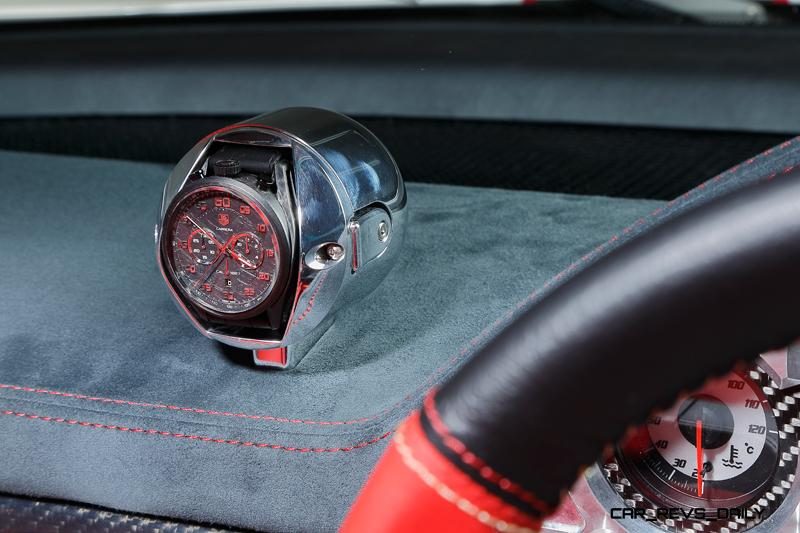

Okuyama is a famed industrial designer with exquisite beauty at his pencil’s edge — regardless of the product category in question. The polished alloy egg dashboard mount for his laptimer/wristwatch is a good example of joyful detailing being top-of-mind when putting his name on anything. Home decor and furnishings, fashion and lifestyle come together at Ken Okuyama Design — but the core passion still rolls on four wheels.
The Kode9 is a gorgeous mid-engine targa with absolutely wild panel shapes: overflowing fenders with extreme convex bulges on all sides make even the ultra-low Kode9 feel as macho as a Jaguar F-Type or Porsche Boxster, if not more so.
The first execution is probably our favorite between the Kode9 in silver/white as a coupe below and the Spyder in Gulf-ish blue/orange racing livery. (Not Gulf-ish: the Kode9 Spyder wears Gulf logos. But the colors are much richer and bolder than actual Gulf Racing, who are not amused by knockoffs.) 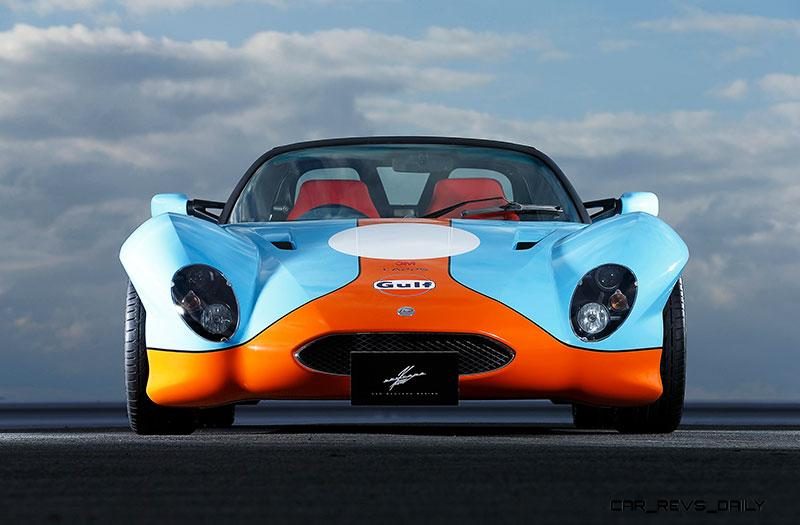
Besides that… Why do we prefer the Kode9 coupe?
Its clamshell engine cover in back is a true work of art. It makes the Kode9 feel like a modern, mini Disco Volante!
This single-piece element made from advanced composites is unlike anything a machine can stamp out of flat steel. Only the hand-formed alloy panels of the coach-built era and the Italian racing scene in the 1950s can compare with the wild form of the Kode9 tail.
Semi-circular cuts in the side are the air intakes for the Kode9’s 370-horsepower supercharged 2.0-liter four-cylinder in back. A rounded, nearly spherical engine cover meets the black roof panel right behind the two passengers’ heads, flowing downward into a rounded tail graphic elegantly and with the joyfulness of a child’s fantasy-car sketches.
A clean surface for this clamshell means no back glass for rear visibility. A side benefit is the freakishly expensive and unique look of the Kode9 from behind. A slim horizontal lightbar of LEDs forms the stop lamps in red, but flips back to crystal grey when off. The tail fin — or horizontal stabilizer in aeronautical terms — is a gorgeous detail. Rising from the center of the rounded rear bumper, this piece houses a vertical CHMSL third brake light nicely, and also looks like the ideal place for a rear-facing camera — ported inside to a screen-based rear-view mirror.
The Kode9 Spyder takes much of the fuselage-shaped fenders and nose into a fresh design — this time sans the giant clamshell rear end we love so much in the coupe/targa version.
In its place is a clean horizontal engine cover, emphasizing the car’s rear-engined nature and eagerness on the racetrack.
The central tub of both cars is a hydro-formed aluminum element that may or may not be sourced from another production car. KOD does not reveal its origins. Unique and bespoke front and rear subframes house the front suspension, steering and crash structures in front, while a unique rear suspension and engine cradle makes a happy home for the engine and transaxle.
[UPDATE: This is a reskinned Lotus Elise. Knew we’d seen that windshield graphic somewhere. The wing mirrors are a dead giveaway. As is the cabin on second look. Eye roll.]
Unfortunately for the Spyder, the tail treatment is just too generic for our eyes. Off-the-shelf quad round brake lights live beneath an integrated flip spoiler at the back edge of the Kode9 Spyder, recalling Can-Am Spyders from all the great racing marques in the 1960s and 1970s.
The look is just not very special or evocative around back, hurting one of the Kode9 coupe’s coolest angles mortally.
Another source of cognitive dissonance for the Kode9 Spyder is its 1950s-feeling curvature in the nose and fenders — a modern expression of the primitive aero insights from the era.
But then we have this questionable Gulf livery. Gulf’s iconic race colors did not materialize until around 1966. Not a huge deal, but for an exotic supercar, authenticity is extremely important to shoppers. Any whiff of kit-car looks about the Kode9’s tail, plus this paintwork, makes the whole thing feel cheap.
Cheap is not a good impression for the Kode9 to leave viewers — purely because actually buying and owning own of these ultra-rare machines will be extremely expensive.
The ultra-light 1500-pound curb weight of the Spyder is thanks to weight-saving materials, dropping about 200-pounds versus the coupe/targa. Also a drop in power: the Kode9 Spyder show car runs a 1.8-liter four-cylinder with, we believe, atmospheric induction. (No turbos or supercharger as on the Coupe.)
Ken Okuyama Design does clarify that the buyer can specify what engine to use when ordering their own. That flexibility is nice, but is likely limited to four-cylinder engines due to simple packaging restrictions.
All in, we’d ballpark a $100k price for either of the Kode9 models, but pricing is firmly on-application-only and sales handled by the flagship boutique for sales worldwide. (We’ve inquired with the firm on pricing and availability, and will update this article if they respond.)
Road legality for both in Japan is awesome and extends to numerous other Asian nations… but not the USA as of yet.
Our main concern with the Kode9 is fairly predictable: the car is so small, but so expensive. So unique as a supercar, but also not (anywhere) near the 911 Turbo or 488 GTB in performance.
What we have here is perhaps the spiritual inspiration for the Alfa Romeo 4C — itself an aspiring supercar facing a bit less excitement among possible buyers when they learn it only has a 1.75-liter turbo with about 240 horsepower.
We see great things for Ken Okuyama Design, and hope to see more of their design vision come to life in the coming years.
Our one piece of advice? Go bigger and much faster. More exotic. A car from Okuyama with twice the power, a 550HP GT-R engine or perhaps RC-F V8, plus concept-like looks? That would be a much more enticing prospect for the Dubai and Singapore hypercar crowds. And with a price ballpark of $150k, would also represent far better ‘value’ to prospective buyers.
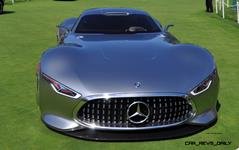
Tom Burkart is the founder and managing editor of Car-Revs-Daily.com, an innovative and rapidly-expanding automotive news magazine.
He holds a Journalism JBA degree from the University of Wisconsin – Madison. Tom currently resides in Charleston, South Carolina with his two amazing dogs, Drake and Tank.
Mr. Burkart is available for all questions and concerns by email Tom(at)car-revs-daily.com.




